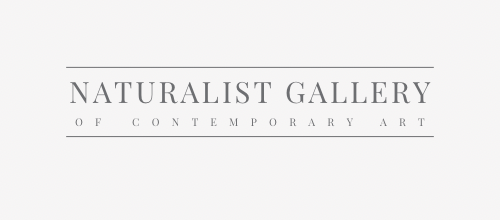Embarking on a journey to turn your passion for art into a sustainable career is an exciting and rewarding decision.
Start your art business successfully! Choose your niche, set fair prices, create a strong brand, and promote through websites, social media, and offline events. Register your business, ensuring legal compliance and acquiring any necessary licenses.
As you take the leap into the world of professional artistry, it's crucial to approach this endeavor with careful planning and dedication. Follow these steps to set yourself up for success in the competitive realm of art entrepreneurship:
Explore our curated selection of contemporary artists from around the globe.
Naturalist Gallery offers artist representation internationally. Apply your art.
1. Craft a Comprehensive Plan
Becoming a professional artist means not just pursuing your passion but also starting your own art business. Begin with a well-thought-out business plan, outlining your artistic mission, defining success, and setting short- and long-term goals. Consider your unique artistic voice and how it aligns with your career aspirations. This plan will be the roadmap guiding your journey into the art business.
2. Define Your Art Practice
Clearly articulate your mission, vision, and goals for your art career. What sets you apart from other artists? Define your unique style and artistic voice. These details will not only guide your creative process but also form the basis for an artist statement, crucial for applications, promotions, and establishing your brand identity.
3. Identify Your Target Customer
Understanding your ideal customer is essential for effective marketing. Define your target audience based on factors like income levels, art-buying habits, and preferred art sources. Tailor your marketing strategy to reach this specific audience through channels like social media, art fairs, or galleries.
4. Financial Planning
Addressing financial aspects is a critical step in your art business plan. Create a detailed list of business and personal expenses, including art supplies, studio space, and personal living costs. Develop a financial strategy that may involve savings, grants, crowdfunding, or part-time work to sustain yourself as your art business takes off.
5. Price Your Art Thoughtfully
Determining the right pricing for your artwork is crucial for financial success. Consider all costs involved, including materials, labor, shipping, and overhead. Set a reasonable hourly wage for your artistic skills, ensuring your pricing covers all expenses and leaves room for profit. Offering artwork at various price points broadens your market reach.
6. Legalize Your Business
Establish the legal foundation for your art business by obtaining the necessary licenses and permits. Choose a business structure, often a sole proprietorship for artists, and register your business name. Set up a separate business checking account to streamline financial management.
7. Develop an Online Presence
In the digital age, a compelling online presence is non-negotiable. Create a professional website showcasing your portfolio, biography, and contact information. Utilize social media strategically, focusing on platforms that align with your target audience. Consistent branding across platforms enhances your professional image.
8. Stay Organized with Tools
Running a successful art business requires meticulous organization. Utilize tools like Artwork Archive to manage inventory, contacts, sales records, and more. These tools streamline business operations, ensuring you stay on top of deadlines and gain insights into your sales strategy.
9. Keep Learning and Adapting
Continuous learning is key to evolving as an artist and entrepreneur. Stay informed about industry trends, attend workshops, and adapt your business strategies as needed. Embrace a proactive approach to personal and professional growth.
10. Launch Your Art Business
With all elements in place, it's time to officially launch your art business. Share your work with the world through various channels, engage with your audience, and be persistent in your efforts. A successful art business is a continuous journey, marked by creativity, resilience, and a passion for your craft.
Pros and Cons of Starting an Art Business
Pros:
- Full control over your artistic career and business decisions.
- Building genuine relationships with customers who appreciate your unique creations.
- Flexibility in treating your art business as a side hustle or a full-time venture.
- Limited initial investment, especially if you already have a body of work.
Cons:
- Sensitivity to economic downturns as art is often considered a luxury.
- Time-consuming aspects, including maintaining a website and updating images.
- Requires constant hustle, proactive marketing, and self-promotion efforts.
View limited edition prints by contemporary artists at Naturalist Gallery.
Embarking on an art business journey is both an artistic and entrepreneurial endeavor. By carefully navigating these steps, you can transform your passion for art into a thriving and sustainable career. Remember, resilience, adaptability, and continuous learning are key to success in the dynamic world of art entrepreneurship.
You may also find the following articles helpful:
The Fine Art Enthusiast's Guide
Corporate Takeover of the Art World
Art Criticism: Evaluating Contemporary Art
Art Consultants in the Contemporary Art World
The Art Advisor's Guide: Navigating the Art Market
Artist Grants: A Guide to Successful Applications









